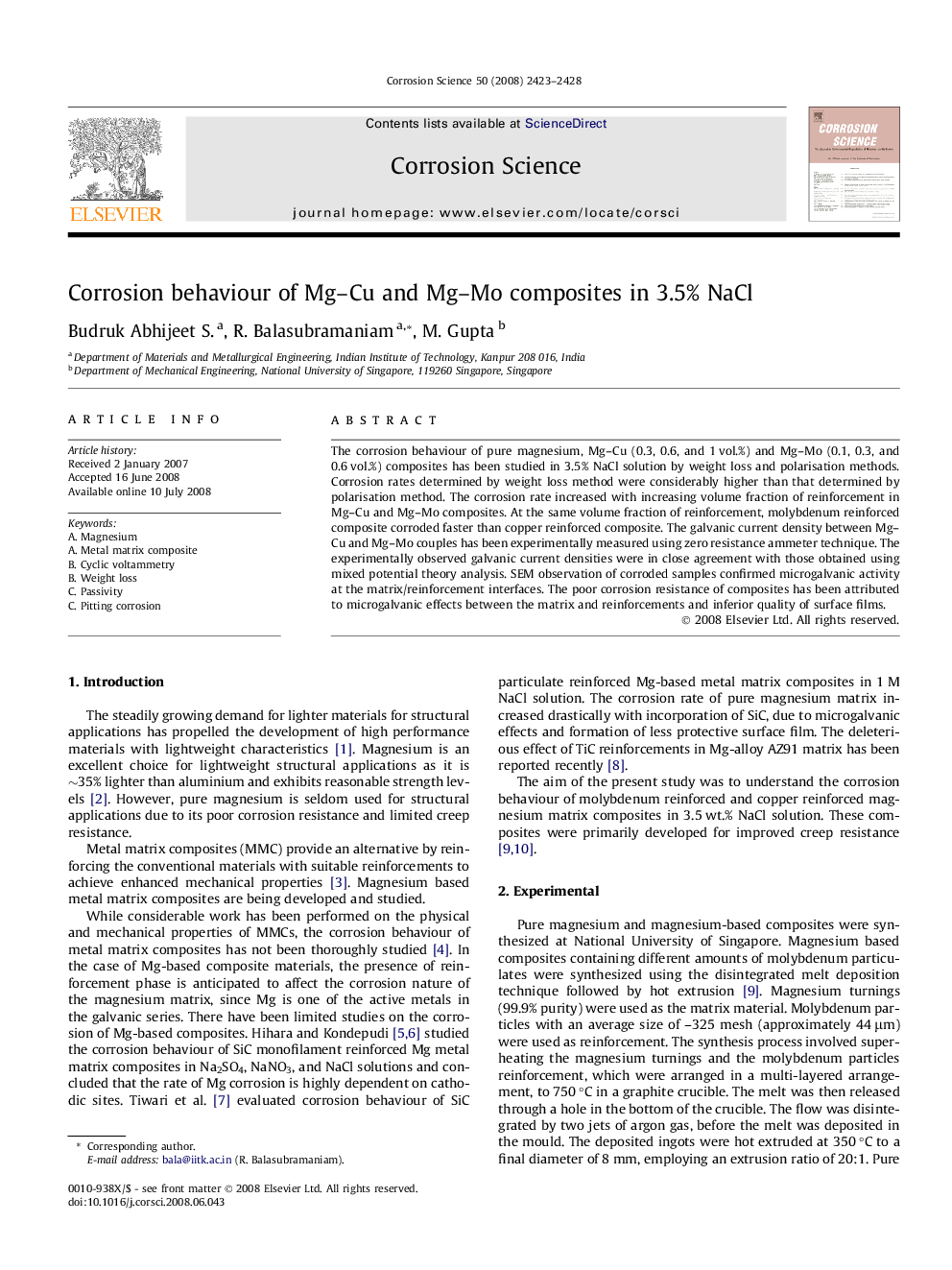| Article ID | Journal | Published Year | Pages | File Type |
|---|---|---|---|---|
| 1471389 | Corrosion Science | 2008 | 6 Pages |
The corrosion behaviour of pure magnesium, Mg–Cu (0.3, 0.6, and 1 vol.%) and Mg–Mo (0.1, 0.3, and 0.6 vol.%) composites has been studied in 3.5% NaCl solution by weight loss and polarisation methods. Corrosion rates determined by weight loss method were considerably higher than that determined by polarisation method. The corrosion rate increased with increasing volume fraction of reinforcement in Mg–Cu and Mg–Mo composites. At the same volume fraction of reinforcement, molybdenum reinforced composite corroded faster than copper reinforced composite. The galvanic current density between Mg–Cu and Mg–Mo couples has been experimentally measured using zero resistance ammeter technique. The experimentally observed galvanic current densities were in close agreement with those obtained using mixed potential theory analysis. SEM observation of corroded samples confirmed microgalvanic activity at the matrix/reinforcement interfaces. The poor corrosion resistance of composites has been attributed to microgalvanic effects between the matrix and reinforcements and inferior quality of surface films.
